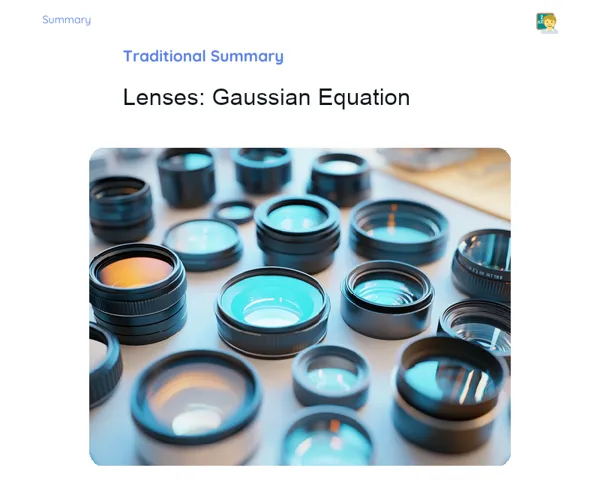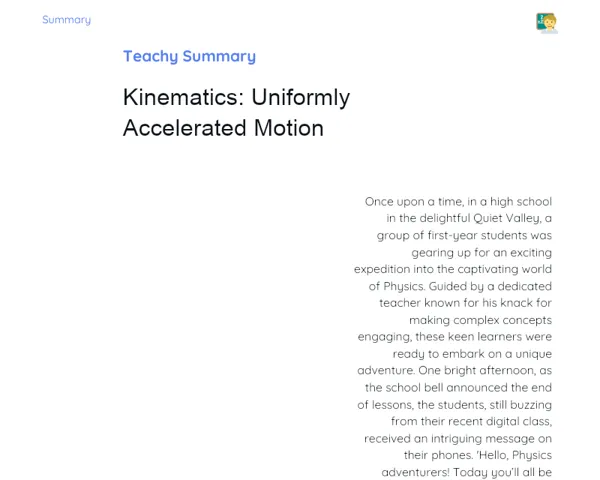Goals
1. Grasp that a simple pendulum can demonstrate motion defined by simple harmonic motion.
2. Calculate the gravitational acceleration in a region, or find the length or period of a simple pendulum.
Contextualization
Simple harmonic motion (SHM) is a core concept in physics, evident in everyday life, like the swinging of a pendulum in a vintage wall clock or the bouncing of a spring. A solid understanding of this topic helps students appreciate both natural and technological occurrences. For instance, the predictable motion of a pendulum can accurately gauge local gravity, a vital application in fields like civil and mechanical engineering, where evaluating structures that experience vibrations is critical.
Subject Relevance
To Remember!
Simple Harmonic Motion (SHM)
Simple Harmonic Motion (SHM) refers to a type of periodic motion where the restoring force is directly proportional to the displacement and acts in the reverse direction. In a simple pendulum, SHM is observable in the oscillatory motion induced by gravity, which seeks to return the pendulum mass to its resting position.
-
SHM is marked by periodic and repetitive movement.
-
The restoring force in SHM correlates directly with the displacement.
-
In a simple pendulum, the restoring force emerges from the tangential component of the gravitational force.
Simple Pendulum
A simple pendulum includes a mass attached to a weightless and non-stretchable string, swinging under the influence of gravity. When moved from its resting place, the pendulum undergoes an oscillatory motion that can be articulated through SHM, so long as the amplitude of the oscillations remains modest.
-
The simple pendulum serves as an excellent example of SHM.
-
The period formula for a simple pendulum is T = 2π√(L/g).
-
The simple pendulum is instrumental in measuring gravitational acceleration.
Period of Oscillation
The period of oscillation is the time it takes for the pendulum to complete one full swing. For a simple pendulum, the period is calculated with the formula T = 2π√(L/g), where T represents the period, L is the length of the pendulum's string, and g is the gravitational acceleration.
-
The oscillation period relies on the length of the pendulum and the gravity acceleration.
-
For small swings, the period does not depend on the oscillation amplitude.
-
An accurate period measurement is vital for determining gravitational acceleration.
Practical Applications
-
Pendulum clocks: Employ simple harmonic motion to accurately measure time.
-
Seismographs: Instruments that detect and record ground vibrations based on SHM principles.
-
Civil engineering: Assessment of structures that experience oscillations, such as bridges and buildings, for safety and structural integrity.
Key Terms
-
Simple Harmonic Motion (SHM): A periodic motion where the restoring force is proportional to the displacement.
-
Simple Pendulum: A physical setup composed of a mass suspended by a string, swinging due to gravity.
-
Period of Oscillation: The time taken to finish one complete swing, expressed by the formula T = 2π√(L/g).
Questions for Reflections
-
What applications of SHM can be found in civil engineering or mechanics?
-
Can you identify other examples of SHM in natural or man-made systems?
-
How does precision in measurements affect outcomes in practical applications like civil or mechanical engineering?
Practical Challenge: Measuring Local Gravity with a Pendulum
In this mini-challenge, apply the concepts learned to calculate local gravitational acceleration using a simple pendulum. This task will reinforce your comprehension of Simple Harmonic Motion and highlight the need for precision in measurements.
Instructions
-
Create a simple pendulum with a string and a suitable mass (like a washer or a small weight).
-
Record the length of the pendulum's string.
-
Displace the pendulum mass to a minimal amplitude and time 10 complete oscillations.
-
Calculate the average period for one oscillation (total time divided by 10).
-
Rearrange the formula T = 2π√(L/g) to find the local gravitational acceleration (g).
-
Document and compare your findings with the standard gravitational acceleration value (approximately 9.81 m/s²).
-
Discuss possible sources of measurement error and how to minimize them.



